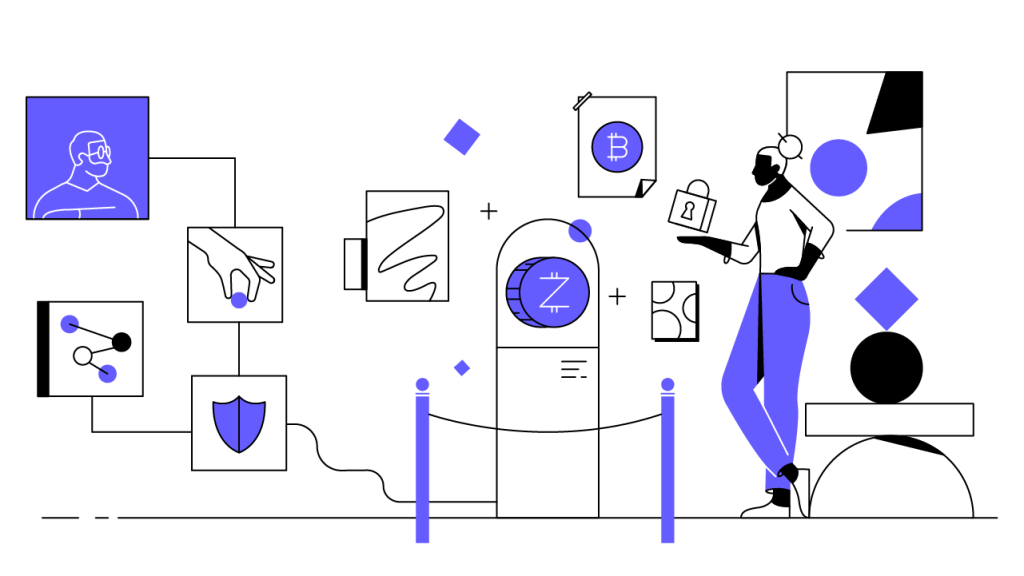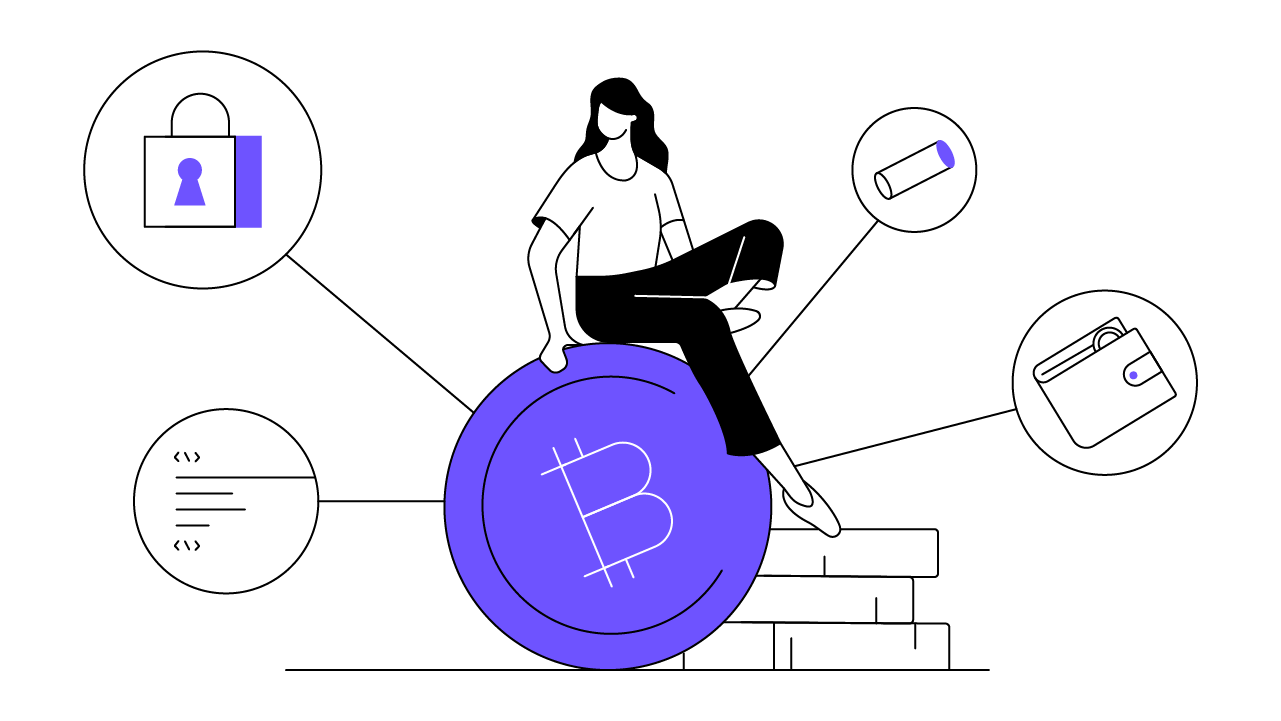Contents
ZCASH (ZEC): A Privacy Coin Pioneer in Crypto
A wide variety of users and enterprise clients globally demand the type of privacy, flexibility, and performance that the Zcash protocol offers.
Updated October 3, 2023 • 4 min read

Summary
In the digital age, user privacy is routinely compromised by hacks, surveillance, profiling, and more. Zcash has created a blockchain protocol designed to improve privacy by masking sensitive user data. To do so, the team behind Zcash developed zk-SNARK cryptographic proof technology, which can hide vital blockchain transaction data. An innovative method in the field of blockchain, zk-SNARK technology has influenced many other cryptocurrency projects. In recent years, however, Zcash and other privacy-preserving blockchain protocols have become a topic of controversy among regulators given the ethical complexities of data privacy.
The Revolutionary Zcash Protocol
In 2014, Zcash founder Zooko Wilcox and a group of seven scientists proposed an experimental blockchain-based ecosystem known as “Zerocash” (or “Zcash”), driven by a native cryptocurrency (ZEC). The proposal eventually raised three million dollars to design the initial protocol, and on October 28, 2016, the Zcash network went live. Zcash is known as one of the first blockchain protocols to design a specialized type of cryptographic proof known as a zk-SNARK (zero-knowledge succinct non-interactive argument of knowledge). Generally, zk-SNARKs are used to privately verify transactions without revealing any sensitive data to public network participants.
Since going live in 2016, the project has experienced a number of transformations. Between 2016 and 2018, Zcash released a series of early upgrades known as the “Sprout series.” The team also began developing two core protocol updates called Overwinter and Sapling. Discussed in more detail below, Sprout, Overwinter, and Sapling all sought to resolve the types of limitations that become apparent as blockchain networks mature. In March of 2017, the Zcash Foundation was created by using an initial endowment of 273,000 ZEC (worth upwards of 17 million U.S. dollars at the time) from the Founders’ Reward, a Zcash issuance distributed to Zcash’s parent company (rebranded as the Electric Coin Co. in 2019), the Zcash Foundation, and a group of original investors and contributors.
Following extensive collaboration with JP Morgan (driven by the bank’s interest in zk-SNARK technology), Zcash’s Sapling update was launched on October 29, 2018, almost exactly two years after the Zcash network’s initial release.
Zero Knowledge Proofs and zk-SNARK Technology
Zk-SNARKs are built with cryptographic technology that enables one party (the prover) to verify to another party (the verifier) that specific information is true — but in an encrypted manner, mitigating the revelation of additional sensitive data. As an example, the prover could demonstrate to the verifier that the cryptographic hash of a random number exists, without definitively stating what the actual number built with cryptographic technology that enables one party (the prover) to verify to another party (the verifier) that specific information is true — but in an encrypted manner, without revealing any additional sensitive data.
Zcash was designed with several state-of-the-art features that use zk-SNARKs, including z-addresses (private, also known as shielded) and t-addresses (transparent). The protocol allows for multiple transaction types that either hide or reveal sensitive data (depending on the context) using these two main address renditions. The Zcash protocol employs four basic transaction types:
Private transactions (from z-address to z-address)
Deshielding transactions (from z-address to t-address)
Shielding transactions (from t-address to z-address)
Public transactions (from t-address to t-address)
This interoperable feature allows users to hide as little or as much data as they choose when sending transactions on the Zcash blockchain. For example, the owner of a specific address is able to choose to disclose a z-address and transaction details to a trusted third party — potentially for compliance or auditory reasons — by using payment disclosure and view- key techniques. Alternatively, transacting between two transparent addresses (t-addresses) works similarly in a similar manner to the Bitcoin blockchain, where the sender address, receiver address, and value of the transfer are all publicly visible.
Zcash Blockchain Protocol Updates and First Network Halving
Since the introduction of the original Sprout protocol and its upgraded second rendition, Overwinter, Zcash has released several major versions. Sapling — the next version of Overwinter — included improved performance for shielded addresses (z-addresses) and transaction keys, as well as an enhanced spending authorization mechanism. Blossom — Zcash’s third main version (released on December 11, 2019) — mainly focused on improving transaction settlement. To this end, Blossom reduced block times to improve the protocol’s overall throughput, ultimately enhancing the network’s usability and market potential.
The platform’s fourth version, Heartwood, was released in June of 2020. It added FlyClient, a more efficient method for light-client block-header verification, enabling Zcash to increase its usability and enterprise application. A light-client (or light node) is a specialized piece of software interconnected with a full node within a blockchain system. Basically, they act like the mortar between bricks in a wall — light-clients help bond the full nodes together so that full nodes can do a better job of keeping the network running by broadcasting information more efficiently. Heartwood also made modifications to Zcash’s consensus mechanism that allowed Coinbase funds to be mined to shielded addresses.
The network’s fifth enhancement, Canopy, was released in November of 2020 (the same time frame as the Zcash halving). Canopy marks the establishment of a new development fund that will be used over the next four years. The original Zcash development fund was established prior to network launch, and ends in November of 2020. In the new fund, Zcash network miners will receive 80% of the mining rewards while the remaining 20% will be divided between the newly created Major Grants Fund (8%), Electric Coin Co (7%), and the Zcash Foundation (5%).
After the Zcash halving that occurred in November of 2020, Zcash’s block reward went from 6.25 ZEC to 3.125 ZEC. Similarly to Bitcoin, Zcash has a maximum total supply of 21 million ZEC.
The Zcash Blockchain’s Privacy
Zcash has come a long way since its original network launch in late 2016, and continues to offer blockchain and crypto users control over the visibility of their transaction data with its privacy-preserving features. Zk-SNARK cryptographic proofs have helped set the privacy standard for blockchain-based use cases in the global marketplace. A wide variety of users and enterprise clients alike demand the type of privacy, flexibility, and performance that the Zcash protocol provides. The years since the project’s ideation in 2014 have been remarkable for the development of Zcash. With the introduction of a development fund and the Zcash halving in late 2020, the project’s trajectory for the coming decade will help further establish Zcash as a foundational member of the blockchain industry.
Cryptopedia does not guarantee the reliability of the Site content and shall not be held liable for any errors, omissions, or inaccuracies. The opinions and views expressed in any Cryptopedia article are solely those of the author(s) and do not reflect the opinions of Gemini or its management. The information provided on the Site is for informational purposes only, and it does not constitute an endorsement of any of the products and services discussed or investment, financial, or trading advice. A qualified professional should be consulted prior to making financial decisions. Please visit our Cryptopedia Site Policy to learn more.

Is this article helpful?


